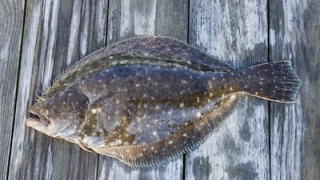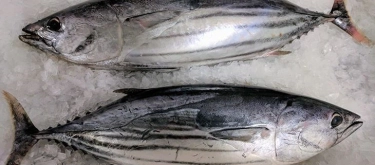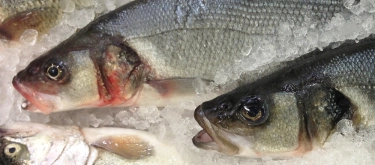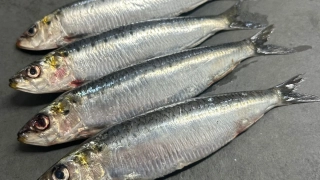Grouper: Taste Profile, Aroma, Benefits and Health Risks
Grouper refers to several species in the subfamily Epinephelinae, found in warm seas around the world. Popular in Asian, Caribbean, and Mediterranean cuisines, grouper is prized for its mild flavor and firm, meaty flesh. Its versatility and reputation as a premium fish make it highly sought-after in restaurants and home kitchens alike.
Grouper is generally safe to eat, but individuals with fish allergies must avoid it. Larger grouper species may accumulate higher levels of mercury, so pregnant women and children should limit consumption.
What does Grouper taste like?
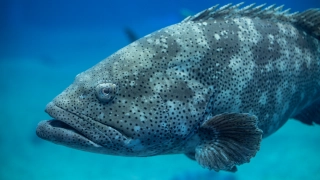
Complete Sensory Description
Eating grouper is a balanced experience between mild sweetness and a satisfying meaty bite. When you first taste it, the flavor is gentle and clean, without any sharp briny punch or oily heaviness. It is less bold than mackerel or sardine, but richer and fuller than flounder or tilapia. Many describe it as sitting halfway between snapper and bass: mild enough to be approachable, yet firm and satisfying.
The taste impression begins with a soft sweetness, like the delicate flavor of shrimp or scallops, carried by subtle umami depth. Grouper does not overwhelm the palate, but its natural richness makes it feel more substantial than very lean white fish.
The aroma of cooked grouper is subtle and pleasant, with a light ocean scent that stays clean and never overpowering. When pan-seared or grilled, the surface develops nutty, roasted notes that enhance its savory qualities.
The texture is one of grouper’s highlights: dense, moist, and meaty, yet tender. It holds together in large, juicy flakes, similar to halibut or monkfish, but slightly softer. This firmness makes grouper excellent for grilling or stewing, as it doesn’t fall apart easily.
The appearance of raw grouper flesh is pale white to pinkish, with a firm, glossy surface. When cooked, it becomes opaque white with slight translucence in the center if not overcooked. Grouper fillets are thick, making them resemble meat cuts rather than delicate fish fillets.
The aftertaste is mild and clean, with a faintly sweet finish that lingers pleasantly without oiliness. Unlike eel or salmon, grouper does not coat the palate; instead, it leaves a refreshing, lightly savory memory.
In-depth Flavor Analysis
Grouper’s balanced taste is due to its moderate fat content—enough to keep the flesh moist but not enough to create heaviness. Amino acids like glycine and alanine contribute sweetness, while glutamic acid provides gentle umami. The dense muscle fibers give grouper its meat-like bite. Wild-caught grouper often has slightly deeper, more mineral notes, while farmed grouper tends to be milder and more consistent in flavor.
Varieties and Culinary Applications
-
Red grouper (Epinephelus morio) – mild, sweet, most common in markets.
-
Goliath grouper (Epinephelus itajara) – extremely large, protected in many regions.
-
Black grouper (Mycteroperca bonaci) – firmer, stronger flavor.
Culinary uses:
-
Grilled steaks with lemon and olive oil.
-
Pan-seared fillets with butter and garlic.
-
Caribbean-style stews with tomato and spices.
-
Asian soups and hotpots where firm texture is valued.
Selection and Storage
-
Flesh should be moist, firm, and glossy.
-
Avoid grouper with dull or mushy texture.
-
Store at 0–4°C and consume within 1–2 days.
-
Freeze at –18°C for longer storage; grouper retains firmness well.
Nutritional Insights
Grouper is an excellent source of lean protein, vitamin B6, vitamin B12, selenium, and phosphorus. It is low in fat but provides enough omega-3 fatty acids to support cardiovascular health. Its balance of protein and micronutrients makes it suitable for both everyday diets and gourmet meals.

Expert Insights & Culinary Tips
Chefs recommend cooking grouper simply to showcase its natural sweetness—grilling, pan-searing, or baking with minimal seasoning. Because of its thickness, grouper benefits from high-heat cooking that sears the outside while keeping the inside moist. It pairs especially well with citrus, garlic, and Mediterranean herbs.
Interesting and Curious Facts
-
Grouper are ambush predators, often hiding in reefs and striking suddenly at prey.
-
The goliath grouper can weigh over 400 kg, making it one of the largest reef fish in the world.
-
In Asian cuisine, grouper is considered a festive fish, often served whole at banquets.
Harm and Dietary Considerations
-
Larger grouper species may accumulate mercury; frequent consumption should be avoided by sensitive groups.
-
Some populations have been overfished, making sourcing important.
-
Fried preparations can increase calorie content significantly.
Religious Dietary Considerations
Grouper is halal in Islam and kosher in Judaism (if scaled). It is accepted in Hindu and Buddhist diets where fish consumption is permitted.
Sustainability & Fishing Practices
-
Many grouper populations are overfished, particularly in the Caribbean and Southeast Asia.
-
Red grouper in the U.S. is managed with quotas and considered relatively sustainable.
-
Goliath grouper is protected and not commercially fished in most regions.
-
Aquaculture of grouper is expanding in Asia but raises concerns about feed sourcing and environmental impact.
-
Consumers should seek MSC-certified or responsibly farmed grouper.
Final Thoughts & Sensory Journey
Grouper combines mild sweetness with a firm, meaty bite, making it one of the most versatile and appealing fish in global cuisine. Its ability to bridge the gap between delicate white fish and hearty “steak fish” gives it a unique place on the table. Responsible sourcing is essential to enjoy grouper without harming fragile reef ecosystems.
Resources
-
Sadovy, Y., & Eklund, A. M. (1999). Synopsis of Biological Data on the Nassau Grouper. FAO Fisheries Synopsis. ISBN 978-9251042771.
-
Colin, P. L. (1996). A Field Guide to the Groupers of the Western Atlantic. Harrowood Books. ISBN 978-0811726079.
-
FAO Fisheries and Aquaculture Reports on Grouper (Epinephelus spp.).
-
NOAA Fisheries: Grouper Stock Assessments.

